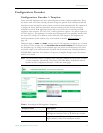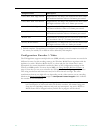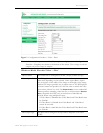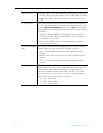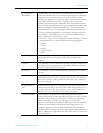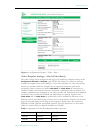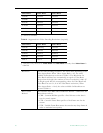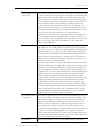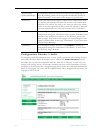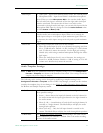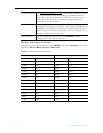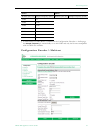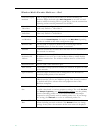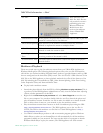
WM Configuration
VBrick WM Appliance Admin Guide 31
Target Bit Rate (bits
per second)
This number represents how much data the VBrick will send out each
second to carry video to a player. The word target is used because the
appliance can vary its bit rate slightly in response to the amount of
detail in the movie or camera output. Bit rate determines how much
data the appliance sends in one second to contain one second of the
video or camera output. The more data the VBrick sends in one
second, the more clearly the details of the video will be seen on a
player. It is not always possible to send the most possible data, since
that requires a large network "pipe" (connection). The trade-off is the
level of detail in the video with the use of smaller network
connections. The encoder tries to encode the video at a quality that
will (on average) match the Target Bit Rate. The larger the number, the
better the quality but this can potentially limit the number of clients that can
connect to the encoder. Note that Video Rates1, 2, and 3 must have
different Target Bit Rates.
Target Frame Rate Sets the video target frame rate in frames per second, for a VBrick
WM Appliance. For a WM Appliance in NTSC mode the supported
values are 30, 15, 10, 7.5, and 1. For a WM Appliance in PAL mode the
supported values are 25, 12.5, 10, 5, and 1. This number represents
how many frames the VBrick will send out each second to carry the
video to a player. The word target is used because in VFR mode the
VBrick can vary its frame rate slightly in response to the amount of
motion in the movie or camera output.
Frame rate is the number of "frames" the VBrick sends in a second for
a Windows Media player to display. Moving pictures are made up of a
rapid series of "still" pictures that move so fast that the "illusion" of
motion is produced. A frame is one such "still" picture. Regular TV
programs in the U.S. run at about 30 frames in a second; and the more
frames presented in a second; the smoother the motion contained
within the video will appear. Encoding and transmitting a frame
requires the use of data, so that, when considering a particular bit rate,
sending more frames demands that each frame contain fewer fine
details. Similar to bit rate, the difference between "constant" and
"variable" frame rate is that if "constant" is chosen, then the VBrick
will ensure that the chosen frame rate is maintained by reducing the
quality of the frames if necessary. The "variable frame rate" setting
allows the VBrick to change how many frames it uses in a second
(within limits), so that frame quality is maintained.
Key Frame Interval
(in seconds)
A key frame is guaranteed to be sent at this interval although it may be
sent more frequently depending on the content being encoded. This
interval allows a player to "sync up" with a video stream already in
progress by providing basic anchoring and orienting data. If "key
frames" are sent less frequently, it will take longer for the video to
begin playing after a player is started on a PC. Key Frames create
overhead, lowering the amount of data available to carry the details of
the video. As a result, VBrick appliances are often set to send key
frames at infrequent intervals. You can set the Key Frame Interval to
zero which will provide all key frames but for most content this will
result in an actual bit rate far above the target.
Smoothness Range 0–100. Default = zero. Use the default except as directed.



